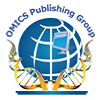Our Group organises 3000+ Global Conferenceseries Events every year across USA, Europe & Asia with support from 1000 more scientific Societies and Publishes 700+ Open Access Journals which contains over 50000 eminent personalities, reputed scientists as editorial board members.
Open Access Journals gaining more Readers and Citations
700 Journals and 15,000,000 Readers Each Journal is getting 25,000+ Readers
Indexed In
- Google Scholar
- RefSeek
- Hamdard University
Useful Links
Share This Page
Optimisation of implant position in cemented femur in total hip replacement
Ash Harkara1, Shani Jain1, Mayank Taygi1, Tasos Iakovidis2 and Christos Theodosiou2
Abstract
Total hip replacement (THR) is one of the most common and effective surgical procedures performed worldwide with the purpose of improving the quality of life of patients suffering from hip disorders. There are two major types of artificial hip replacements: Cemented and uncemented. This paper presents finite element approach to measure micromotion along the stem / cement and cement/ bone interface. A response surface model (RSM) was created and used to determine the best implant position for lowest value of micromotion. In this study, finite element model of femur was created from 3D CT scan data using ImageSim software from VOLMO Ltd. (UK). Surface model of femur in STL format was exported into CAE environment (TSV Pre) where femur resection, implant positioning and alignment were done. The final assembled model of bone, cement and implant was used as the base model for creating new models. The loading and boundary condition have been applied for walking condition. Model Generation using Script: Java scripting functionality within the tool provided a robust environment for automatically rotating the implant to a new angle, exporting STL, Volume meshing, applying load boundary condition and finally exporting volume mesh. This technique provided an efficient approach for generating new models with different implant positions in the femur bone. Around 25 models were generated in less than six hours. These models were then simulated in DYNAMIS solver available internally in the environment. Results: The shear strain distribution and micro motion on the femoral bone with fitted implant for walking loading condition was calculated. The regions studied were the stem, cement and bone in the proximal level. The maximum values were observed in shear strain �³yz along the stem /cement interface below the stem neck. High values were also observed in shear strain �³zx in the lower side of stem. Shear strain �³yz & �³zx can be reasonably considered to be the stimulus of the slip initiation and micromotion at the cement stem interface. Maximum micromotion observed was 75 micron along the �³yz direction. Our initial results also showed that there is more than one implant position where micromotion reaches a minimum. The results obtained from the study demonstrated the potential applications of the tool for predicting the best and worst positions for an implant. The response surface methodology is useful for providing insights into the sensitivity of micromotion to positioning.Biography
Ash Harkara is Managing Director, VOLMO Ltd., UK. He studied physics and electronics at University of Kashmir, India. He did his PhD in Electronic Science at Pune University India. From 1997-2000, he did Post-doctoral work at Leeds University (UK) on Monte Carlo simulation of electron transport in VLSI devices. From 2000-2007 he worked for various companies including 3DLabs and Mentor Graphics. In 2007 he did one year full time MBA at Ashridge Business School (UK). Since 2008 he has been working on 3D imaging processing for finite element model generation. He is also the founder Director of VOLMO.

 Spanish
Spanish  Chinese
Chinese  Russian
Russian  German
German  French
French  Japanese
Japanese  Portuguese
Portuguese  Hindi
Hindi